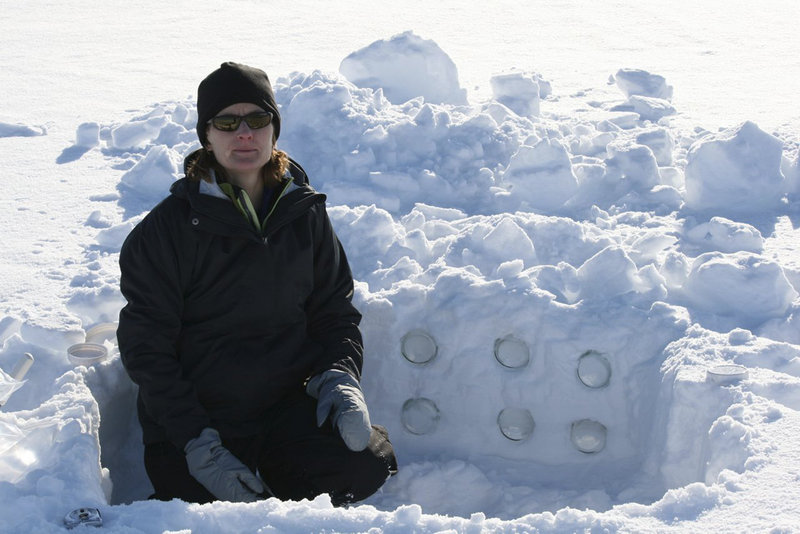WASHINGTON – An international research team is in the land of snow and ice, in search of soot.
Though the Arctic is often pictured as a vast white wasteland, scientists believe a thin layer of soot — mostly invisible — is causing it to absorb more heat. They want to find out if that’s the main reason for the recent rapid warming of the Arctic, which could have a long-term impact on the world’s climate.
Soot, or black carbon, is produced by auto and truck engines, aircraft emissions, burning forests and the use of wood- or coal-burning stoves.
“The Arctic serves as the air conditioner of the planet,” explained Patricia Quinn of the National Oceanic and Atmospheric Administration, one of the research participants. Heat from other parts of the Earth moves to the Arctic in the circulating air and ocean water, and at least some of that warmth can radiate into space.
At the same time, some of the incoming heat from the sun that tends to be absorbed in other locations is reflected by the ice and snow, allowing the polar regions to serve as cooling agents for the planet.
But that may be changing.
In recent years, the Arctic has been warming more rapidly than other regions and, Quinn said, “warming of the Arctic has implications not just for polar bears, but for the entire planet.”
Cutting carbon dioxide and other greenhouse gases is the backbone of any effort to combat warming, both globally and within the Arctic, Quinn said.
But studies indicate that cutting the concentration of short-lived pollutants, such as soot, will reduce the rate of warming in the Arctic faster than cuts in carbon dioxide and other greenhouse gases, which last far longer in the atmosphere, she said. “This is a buying-time approach.”
In February, the United Nations Environmental Program urged cuts in soot emissions for a variety of reasons, including the threat to human health from inhaling it and the potential warming of the polar regions. And others have also raised concerns about pollution from soot.
The Arctic Council, which represents the eight countries that border the Arctic, is deciding whether to seek reductions in soot from other nations and will be using data from the international research project in its deliberations.
The research team includes scientists from Norway, Russia, Germany, Italy and China. They are working from Svalbard, Norway, a group of nine mountainous, ice- and snow-covered islands inside the Arctic Circle, about halfway between the northern tip of Norway and the North Pole.
The scientists will track carbon’s movement through the atmosphere, its deposit on snow and ice surfaces, and its effect on warming in the Arctic. Two NOAA unmanned research aircraft will collect aerosol soot in the air and a Norwegian craft will study the reflectivity of the surface. Researchers also will collect snow samples and send up balloons to study atmospheric chemistry.
Soot warms the atmosphere by absorbing heat from the sun, explained Quinn, who works in NOAA’s Pacific Marine Environmental Laboratory in Seattle. And while it may not be visible like a black scar on the snow surface, even a little soot can mean less energy is reflected. When carbon covers snow and ice, the radiation is absorbed and not reflected.
Tim Bates, co-leader of the NOAA contingent with Quinn, likened the process to wearing a black shirt on a sunny day. “If you want to be cooler, you would wear a light-colored shirt that would reflect the sun’s warmth.”
Copy the Story Link
Send questions/comments to the editors.



Success. Please wait for the page to reload. If the page does not reload within 5 seconds, please refresh the page.
Enter your email and password to access comments.
Hi, to comment on stories you must . This profile is in addition to your subscription and website login.
Already have a commenting profile? .
Invalid username/password.
Please check your email to confirm and complete your registration.
Only subscribers are eligible to post comments. Please subscribe or login first for digital access. Here’s why.
Use the form below to reset your password. When you've submitted your account email, we will send an email with a reset code.